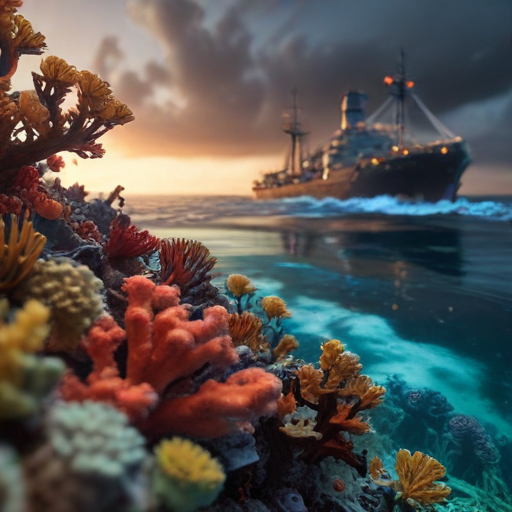The Navy is gearing up for a significant removal operation targeting an invasive coral species that has spread over approximately 80 acres in Pearl Harbor. This coral, known scientifically as Unomia stolonifera, or colloquially as “pulsing coral” or “stoloniferous fire coral,” was first identified in the area in 2020 and is believed to have been introduced through aquarium waste dumped into the harbor.
The vibrant, mesmerizing tentacles of this coral may appear beautiful, but they pose a serious threat to Hawaii’s fragile reef ecosystem. Experts, including Christy Martin from the Coordinating Group on Alien Pest Species, describe the situation as an “environmental emergency,” emphasizing the urgency of eradicating the species before it fragments and spreads further. The invasive coral can grow over hard stony corals, suffocating them and disrupting entire aquatic ecosystems, similar to the situation observed in parts of the Caribbean and north Venezuela.
The Navy has been testing various methods to eliminate this octocoral, discovering that mechanical removal alone is insufficient due to the coral’s ability to fragment and re-establish itself. However, they have made progress by using heavy tarps to smother the coral. During trials, tarps placed over the coral successfully cut off oxygen, leading to its death within a week.
More tarps and removal materials are on the way as the Navy plans to initiate a large-scale removal effort next month, targeting one section of the affected reef at a time. If this endeavor proves successful, it could serve as a potential model for eradicating the invasive octocoral in other regions where it has established itself. While complete removal might take years, experts remain hopeful about achieving eradication.
The removal efforts depend on future funding from the Navy and the coordination of local agencies. While local biologists express cautious optimism regarding the Navy’s capabilities, they also acknowledge the challenges posed by Pearl Harbor as an active naval base, which could facilitate further spread of the coral through boat hulls.
Efforts to combat the issue include educating the public about the dangers of dumping aquariums into natural waters. Recent campaigns, such as “Don’t Let It Loose,” aim to address this growing concern, as 19 aquarium species have been identified in Hawaiian waters in recent years.
In summary, while the removal of the invasive octocoral represents a significant challenge for the Navy and local agencies, the coordinated efforts and potential for innovative removal methods inspire hope for the future sustainability of Hawaii’s marine environment. Through ongoing collaboration and public awareness initiatives, there’s optimism that the state’s unique ecosystem can be preserved for generations to come.
